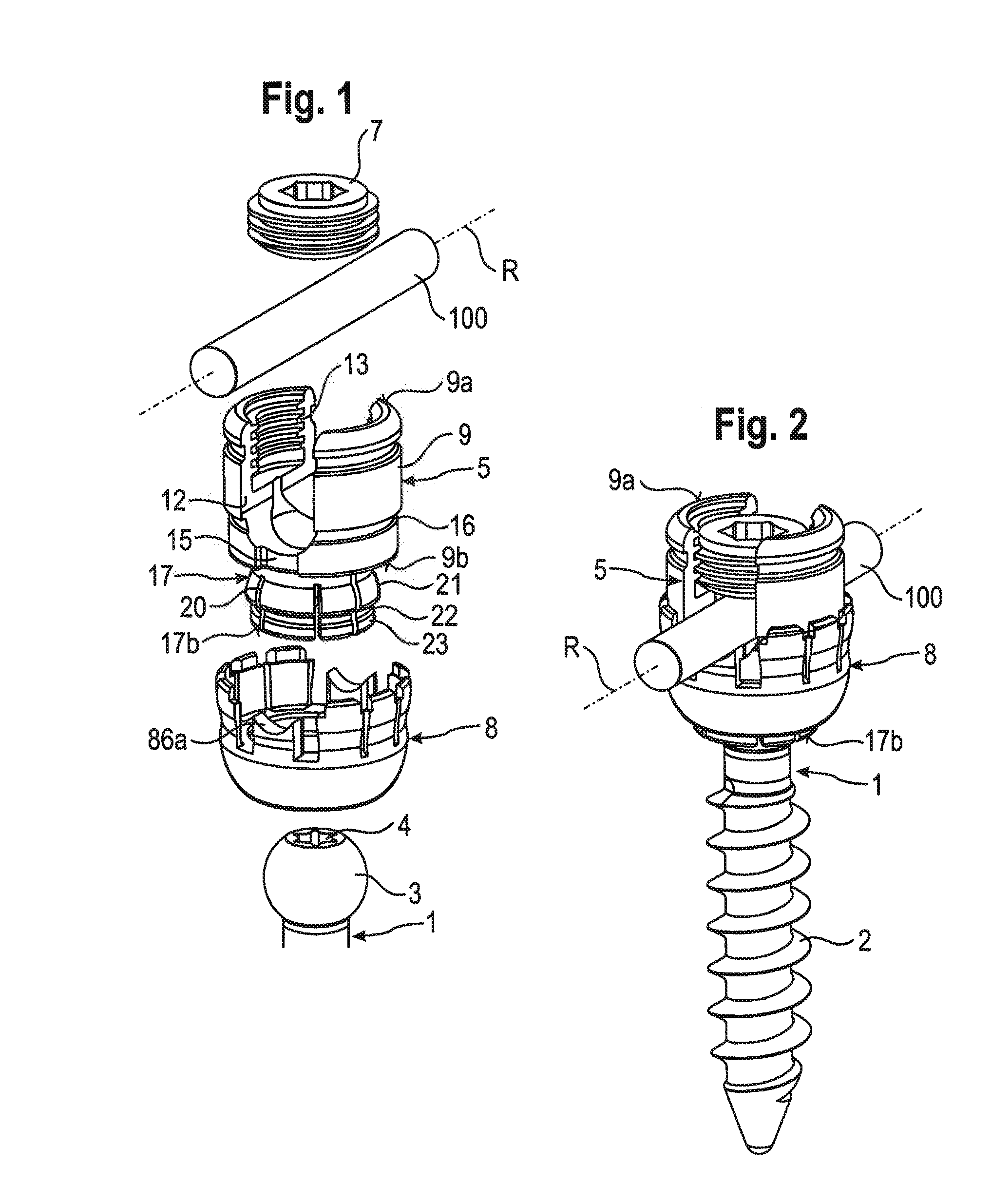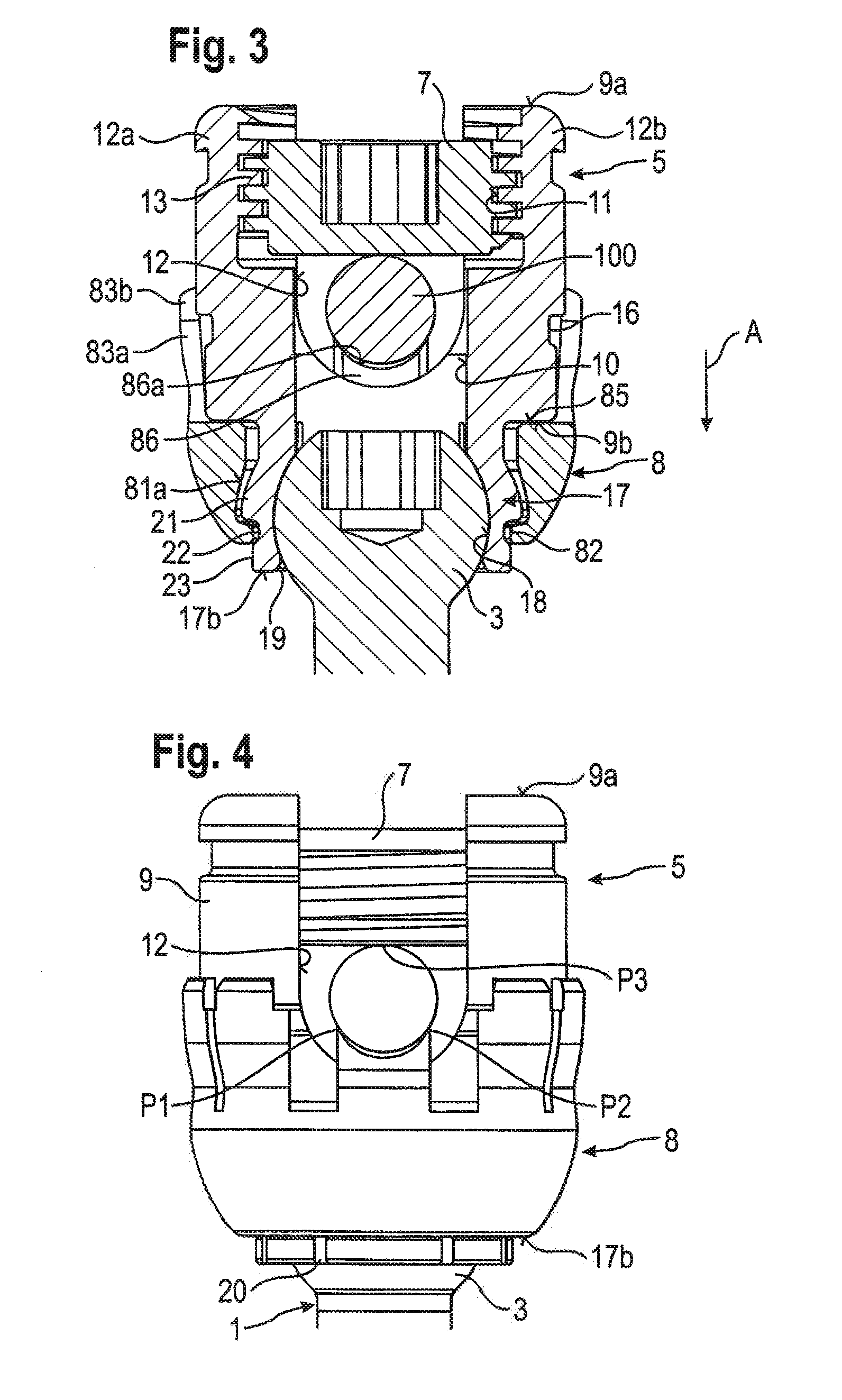Stabilization device for stabilizing vertebrae or bone parts
a stabilizing device and vertebrae technology, applied in the direction of internal osteosynthesis, fasteners, medical science, etc., can solve the problems of increasing costs and rendering spinal surgery more complicated for surgeons or practitioners, and achieve the effect of improving
- Summary
- Abstract
- Description
- Claims
- Application Information
AI Technical Summary
Benefits of technology
Problems solved by technology
Method used
Image
Examples
first embodiment
[0031]As shown in FIGS. 1 and 2, a stabilization device includes a bone anchoring element 1 in the form of a bone screw having a threaded shaft 2 and a head 3 with a curved surface portion. In this embodiment, the head 3 is spherical segment-shaped. The head 3 has a recess 4 for engagement with a tool. The stabilization device also includes a receiving part 5 for receiving a first rod 100 to connect the first rod 100 to the bone anchoring element 1. Further, a fixation element 7, in the form of an inner screw in this embodiment, is provided for fixing the rod 100 in the receiving part 5. The stabilization device also includes a locking ring 8 for locking the head 3 in the receiving part 5. At least one further rod (not shown) is provided that has a diameter different from a diameter of the first rod 100. The rods may have circular cross-sections. Also, the rods may have substantially smooth surfaces.
[0032]The receiving part 5 will be explained with reference to FIGS. 1 to 4. The re...
second embodiment
[0053]As shown in FIG. 13, in a modified second embodiment, a bottom of the V-shaped groove has inwardly curved portions 860a′ and straight sidewalls 861a′.
[0054]In a further modification, as shown in FIGS. 14a to 14c, a V-shaped groove additionally includes straight side walls 863a′.
[0055]In another further modification as shown in FIGS. 15a to 15c, a V-shaped groove has concavely curved sidewalls 864a′ of the V-shape, and straight sidewalls 863a′. In the modified embodiments, an inserted rod can also rest on the free end surface 86a′ along two contact areas P1, P2.
[0056]FIGS. 14a to 14c and FIGS. 15a to 15c schematically show contacts formed by various rods 100, 101, 102 with increasing diameter. The rods in each case rest in the V-shaped groove on two cross-sectional points, or when seen three-dimensionally, along two contact areas P1, P2 in the form of line contacts. From above, the rods may be clamped by the inner screw 7. Hence, each rod can be in a stable clamping position ...
PUM
 Login to View More
Login to View More Abstract
Description
Claims
Application Information
 Login to View More
Login to View More - R&D
- Intellectual Property
- Life Sciences
- Materials
- Tech Scout
- Unparalleled Data Quality
- Higher Quality Content
- 60% Fewer Hallucinations
Browse by: Latest US Patents, China's latest patents, Technical Efficacy Thesaurus, Application Domain, Technology Topic, Popular Technical Reports.
© 2025 PatSnap. All rights reserved.Legal|Privacy policy|Modern Slavery Act Transparency Statement|Sitemap|About US| Contact US: help@patsnap.com



